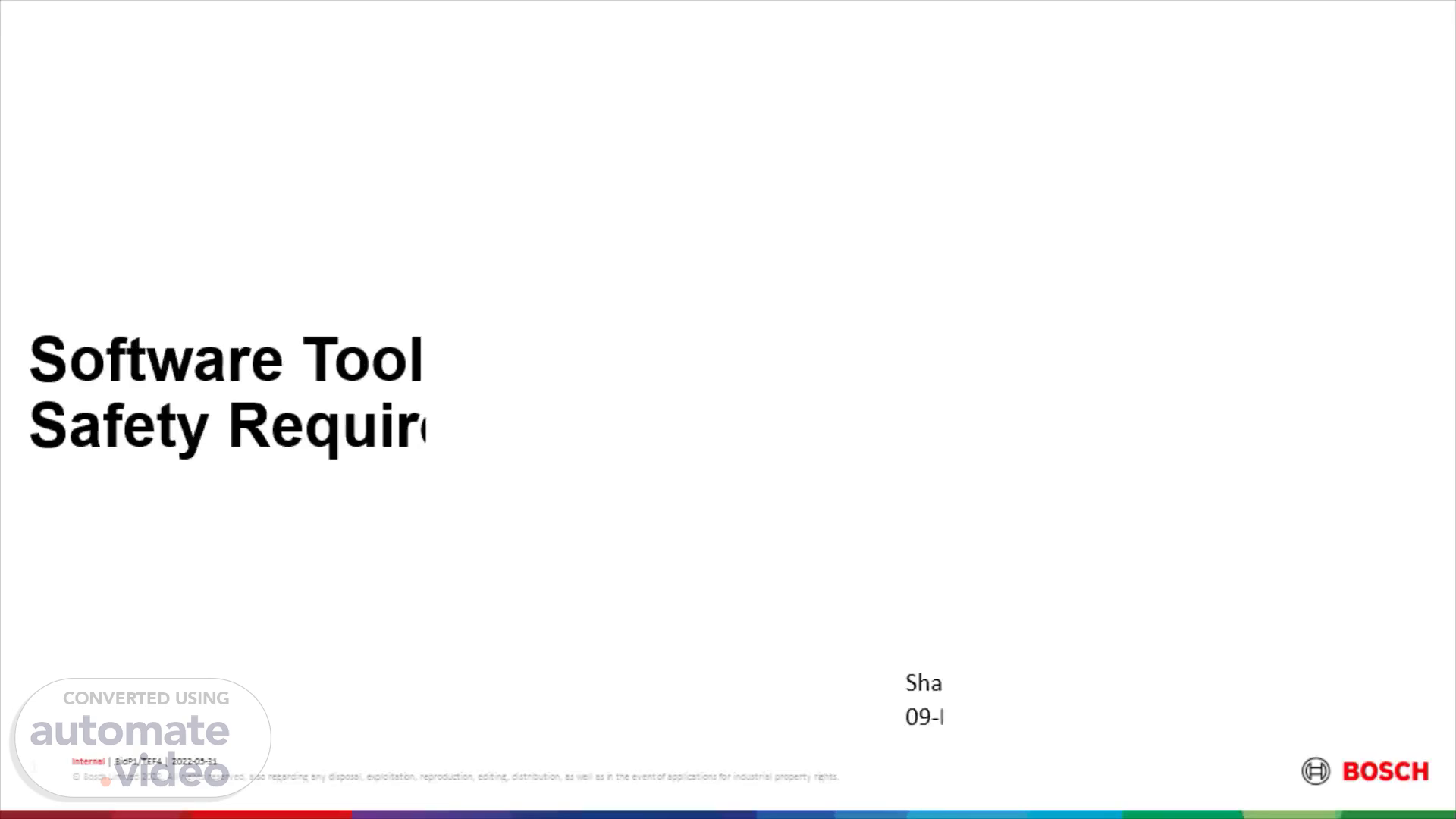
Software Tools in Manufacturing - Product Safety Requirements and Methodology
Scene 1 (0s)
Software Tools in Manufacturing - Product Safety Requirements and Methodology.
Scene 2 (9s)
Subject Matter, Objective and Purpose While using software tools in manufacturing, their failures can introduce faults in a manufactured product. The Corporate Good Practice (CGP) provides a systematic methodology for meeting the CD 00214 “Requirements on Product Safety”. According to CD 00214, the use of software tools for the development or manufacturing safety-relevant products requires: An evaluation whether the tools can have any technical effect on product safety Qualification of tools that can have such effect.
Scene 3 (31s)
Objective and purpose. Objective is to ensure that a systematic failure of software tool does not lead to a product safety violation. This refers to all relevant aspects of product safety, e.g., thermal safety, mechanical safety, functional safety, chemical safety.
Scene 4 (55s)
CGP-Corporate good practice. This CGP is non-binding and aims to: P rovide guidance for Bosch plants to fulfill the CD 00214 requirements for software tools gain a common understanding across plants use synergies in usage of software tools in development and manufacturing and efficiently achieve a significant reduction of systematic faults in products due to software tools.
Scene 5 (1m 12s)
Importance of Software tool in Manufacturing. They increasingly enable, support, or automate almost all activities. Thereby, the systematic failures of software tools can lead to product faults and have a negative impact on product safety..
Scene 6 (1m 26s)
Relevant Software tools. This scope includes an immense number of software tools to be evaluated regarding their impact. The challenge is to handle this evaluation efficiently without reducing the safety of the product..
Scene 7 (1m 42s)
Target Groups. The evaluation of impact of software tools on a product and if necessary, the qualification can be implemented by.
Scene 8 (1m 59s)
Approach for Evaluation and Qualification of Software Tools in Manufacturing.
Scene 9 (2m 9s)
Configuration Management. 9. The information on the tools classification and qualification is recorded in the configuration base- line. This includes in particular: T he documents used in tool classification and qualification including tool classification and qualification reports, T he identification of the tool and its version T he identification of the configuration baseline items for which the tool version has been used T he way the tool was used including the specific environment settings, tool parameters, options, files, and scripts selected for each configuration baseline item..
Scene 10 (2m 33s)
Definitions. Error: It is defined as difference between a computed, observed, or measured value or condition and the true, specified, or theoretically correct value or condition..
Scene 11 (3m 9s)
CD 00214. Objective: Adherence to the legal requirements as well as customer requirements on product safety and to the delivery of high-quality and safe products. Purpose: This CD provides the guidelines for the definition of the OE processes for product safety as well as for avoiding product liability cases..
Scene 12 (3m 25s)
CDQ0301. O bjective ● C lassify characteristics, incl. the identification of special characteristics, and ● E stablish safeguards (quality control loops) for this characteristics in the entire value stream, in order to assure an efficient and effective production control. P urpose ● P romote pre-emptive functional and manufacturing method robustness, ● I mprove product quality in terms of safety, compliance with regulatory as well as legal requirements and functional fulfilment, ● C reate a common understanding of characteristic management in the involved areas (e.g. product view vs. process view), ● M inimize manufacturing defects, ● O ptimize inspection costs and ● Make sure that appropriate safeguards are defined for confirmed special characteristics.
Scene 13 (3m 53s)
13. THANK YOU.